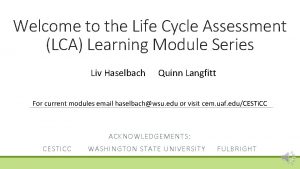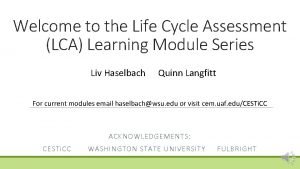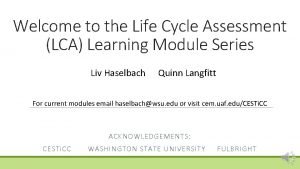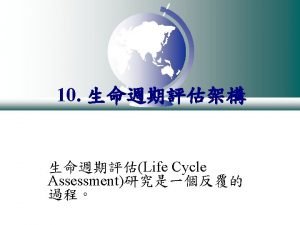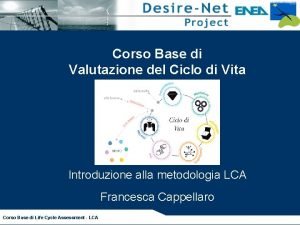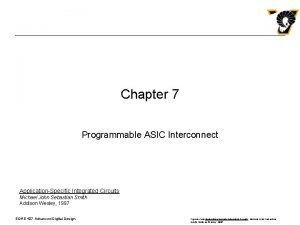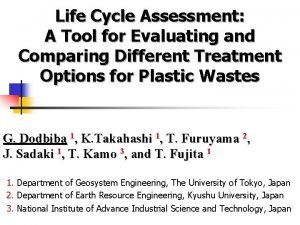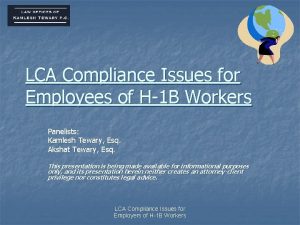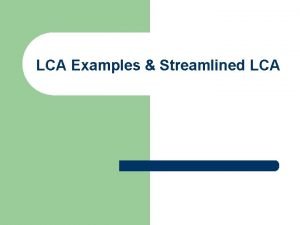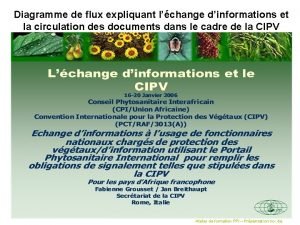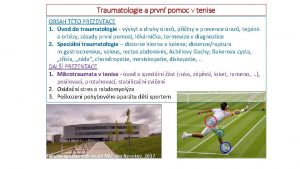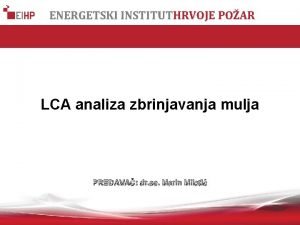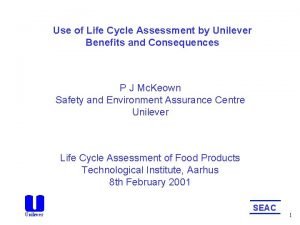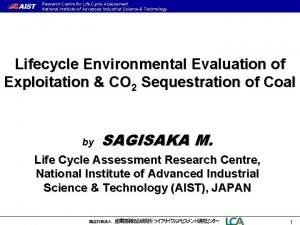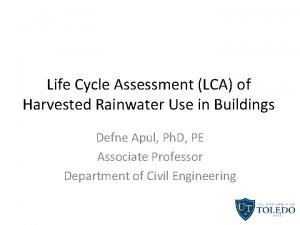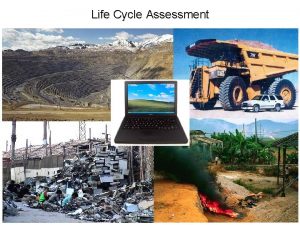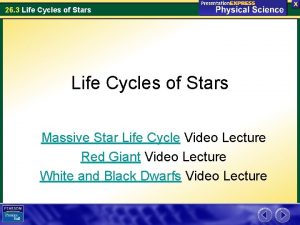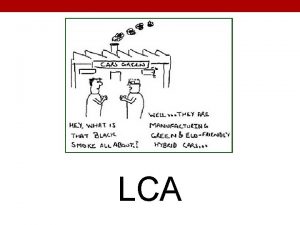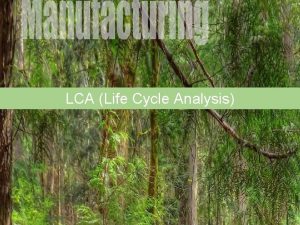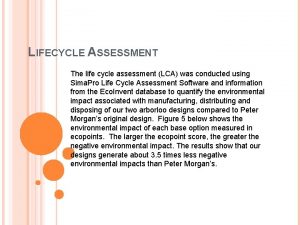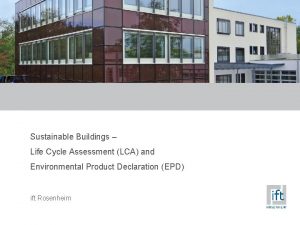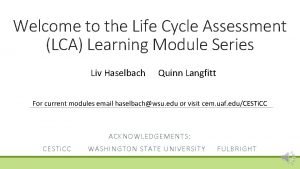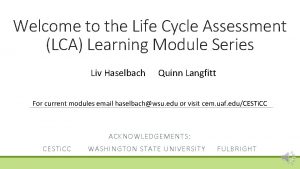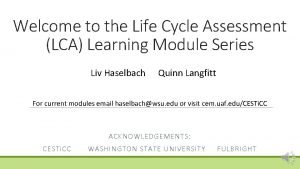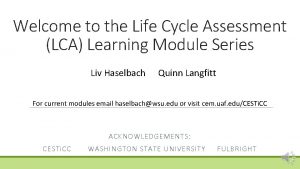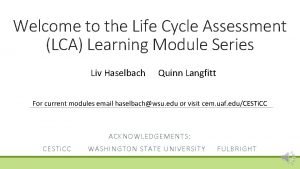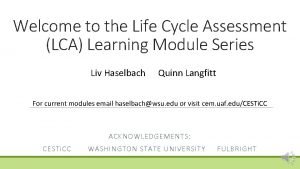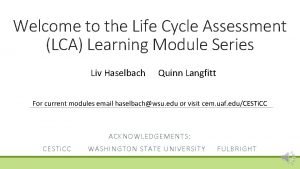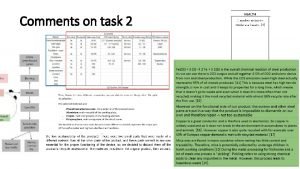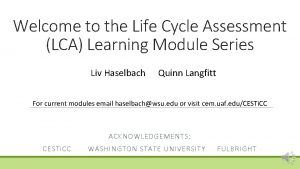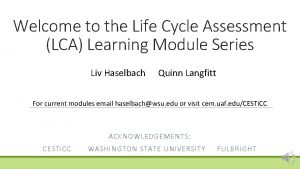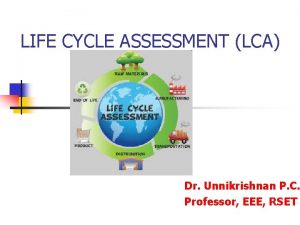LIFE CYCLE ASSESSMENT LCA LIFE CYCLE ASSESSMENT LCA



























- Slides: 27

LIFE CYCLE ASSESSMENT (LCA)

LIFE CYCLE ASSESSMENT (LCA) • As corporations seek to improve their environmental performance they require new methods and tools. LCA is one such tool that can help companies to understand the environmental impacts associated with their products, processes and activities. • LCA is controversial and still evolving as a methodology but the principles behind it are being adopted rapidly by organisations as a way of opening new perspectives and expanding the debate over environmentally sound products and processes. • The goal of LCA is not to arrive at “the answer” but rather to provide important inputs to a broader strategic planning process

LIFE CYCLE ASSESSMENT (LCA) • Life Cycle Assessment is an environmental management tool. The International Organisation for Standardisation (ISO) defines LCA as • A compilation and evaluation of the inputs, outputs and potential environmental impacts of a product throughout its lifecycle

LIFE CYCLE ASSESSMENT (LCA) • LCA considers the following stages in the life cycle of an activity • • • Extraction and processing of raw materials Manufacturing Transportation and distribution Use, reuse and maintenance Recycling Final disposal

LIFE CYCLE ASSESSMENT (LCA) Primary Resources Extraction & Processing Production Use Reuse/ Recycle Disposal Emissions & Waste

LIFE CYCLE ASSESSMENT (LCA) • The LCA methodology is standardised by a series of ISO standards and includes the following phases • • 1. Goal and scope definition (ISO 14041) 2. Inventory Analysis (ISO 14041) 3. Impact Assessment (ISO 14042) 4. Interpretation (ISO 14043)

LIFE CYCLE ASSESSMENT (LCA) Goal & Scope Definition Inventory Analysis Impact Analysis Interpretation

GOAL AND SCOPE DEFINITION • The first phase of LCA includes definition of • • The purpose of the study and its intended use The system and system boundaries The functional unit Data quality, the assumptions and limitations of the study

GOAL AND SCOPE DEFINITION • In full LCA studies, the system boundary is drawn to encompass all stages in the life cycle from extraction of raw materials to the final disposal. However, in some cases, the scope of the study will demand a different approach, where it is not appropriate to include all stages in the life cycle. This is usually the case with commodities, for instance, which can have a number of different uses so that it is not possible to follow their numerous life cycles after the production phase. The scope of such studies is from “cradle to gate”.

GOAL AND SCOPE DEFINITION • One of the most important elements of an LCA study is a functional unit. The functional unit represents a quantitative measure of the output of products or services which the system delivers. In comparative LCA studies, it is crucial that the systems are compared on the basis of equivalent function, that is functional unit • Eg comparison of different beverage packaging should be based on their equivalent function which is to contain a certain amount of beverage. The functional unit is then defined as “the quantity of packaging necessary to contain the specified volume of beverage”.

INVENTORY ANALYSIS • The purpose of the “Inventory Analysis” is to identify and quantify the environmental burdens in the life cycle of the activity under study. The burdens are defined by material and energy used in the system and emissions to air, liquid effluents and solid wastes discharged into the environment. • Inventory Analysis includes the following steps • • Detailed definition of the system under study Data collection Allocation of environmental burdens in multiple-function systems Quantification of the burdens

LIFE CYCLE INVENTORY ANALYSIS Inputs Materials Energy Water Materials Acquisition Formulation, processing and Manufacturing Product Distribution Product use Outputs Principal Products Coproducts Water effluents Airborne emissions Air Recycle, products, components, materials Solid Waste Management Other Environmental interactions

LIFE CYCLE INVENTORY ANALYSIS Environment System Functional Outputs Inputs Emissions/ Wastes Subsystems

LIFE CYCLE INVENTORY ANALYSIS • Environmental burdens are then quantified for each subsystem according to the formula • Where bcj, i is burden j from activity i and xi is a mass or energy flow associated with that activity

CALCULATING ENVIRONMENTAL BURDENS & IMPACTS IN LCA - EXAMPLE • The system in this example has one functional output and each activity i from extraction of raw materials to final disposal generates a certain amount of CO 2 and CH 2. Extraction CO 2 = 0. 2 kg/t CH 4 = 0. 1 kg/t x 1 = 2 t/t. FU x 1 x 2 Production CO 2 = 0. 3 kg/t CH 4 = 0. 1 kg/t x 2 = 1. 5 t/t. FU x 3 Use FU CO 2 = 0. 1 kg/t CH 4 = 0. 1 kg/t x 3 = 1 t/t. FU Disposal CO 2 = 0. 1 kg/t CH 4 = 0. 3 kg/t x 4 = 0. 5 t/t. FU x 4

CALCULATING ENVIRONMENTAL BURDENS & IMPACTS IN LCA - EXAMPLE • Using the Environmental Burdens equation the total environmental burdens per functional unit related to the emissions of CO 2 and HC 4 are therefore BCO 2 = ∑bc. CO 2. xi = (0. 2)2+(0. 3)1. 5+(0. 1)1+(0. 1)0. 5 →BCO 2 = 1. 0 kg/t. FU BCH 4 = ∑bc. CH 4. xi = (0. 1)2+(0. 1)1. 5+(0. 1)1+(0. 3)0. 5 →BCH 4 = 0. 6 kg/t. FU

CLASSIFICATION FACTORS FOR SELECTED BURDENS

CALCULATING ENVIRONMENTAL BURDENS & IMPACTS IN LCA - EXAMPLE EGWP = (ec. CO 2)BCO 2 + (ec. CH 4)BCH 2 = 1(1) + 21(0. 6) → EGWP = 13. 6 kg CO 2 equiv / t. FU

IMPACT ASSESSMENT • The environmental burdens quantified in “Inventory Analysis” are translated into the related environmental impacts. This is carried out within the following steps • • Classification Characterisation Normalisation Valuation

IMPACT ASSESSMENT • Classification • Involves the aggregation of environmental burdens into a smaller number of environmental impact categories to indicate their potential impacts on human and ecological health and the extent of resource depletion. The aggregation is done on the basis of the potential impacts of the burdens so that one burden can be associated with a number of impacts; eg Volatile Organic Compounds (VOC’s) contribute to both global warming and ozone depletion. The approach used most widely for classification of the impacts is known as ‘problem oriented’, whereby the burdens are aggregated according to their relative contributions to the environmental effects they may have

IMPACT ASSESSMENT • The impacts most commonly considered in LCA are • • Non-renewable resource depletion Global warming Ozone depletion Acidification Eutrophication Photochemical oxidant formation Human toxicity Aquatic toxicity

IMPACT ASSESSMENT • Characterisation • Involves the quantification of the impact of interest relative to a reference substance. In the example we examined we look at the Global Warming Potential of the Products life cycle relative to CO 2 emissions. Takes place using the formula eck, j represents the relative contribution of burden Bj to impact Ek

IMPACT ASSESSMENT • Normalisation • The impacts can be normalised with respect to the total emissions or extractions in a certain area over a given period of time. This can help to asses the extent to which an activity contributes to the regional or global environmental impacts. Should be interpreted with care due to lack of reliable data.

IMPACT ASSESSMENT • Valuation • Each impact is assigned a weight which indicates its relative importance. As a result the environmental impacts are aggregated into a single environmental impact function EI Where wk is the relative importance of impact Ek

IMPACT ASSESSMENT • Valuation • A number of problems at philosophical and practical level in the realisation of this and there is no consensus on the best way to aggregate the environmental impacts into a single EI figure. • Some people argue that valuation should not be carried out at all as it obscures information and that considering the impact in a disaggregated form enhances the transparency of the decision making based on LCA results

INTERPRETATION • This phase is aimed at system improvements and innovation and it includes the following steps • • Identification of major burdens and impacts Identification of ‘hot spots’ in the life cycle Sensitivity analysis Evaluation of findings and recommendations

INTERPRETATION • Sensitivity Analysis • Indicates the level of reliability of the LCA • Data availability and reliability • Uncertainties • Data gaps
 Lca evaluation module
Lca evaluation module Simapro lca software free download
Simapro lca software free download Normalization and weighting in lca
Normalization and weighting in lca Latent class analysis stata
Latent class analysis stata Functional unit lca
Functional unit lca Lca in immigration
Lca in immigration Fonte immagine
Fonte immagine Diagramme de flux lca
Diagramme de flux lca Programmable interconnect
Programmable interconnect Lca club theo pezel
Lca club theo pezel Lci
Lci Lca payout cognizant
Lca payout cognizant Lca banrisul
Lca banrisul Career investigation lca
Career investigation lca Lca lad
Lca lad Streamlined lca
Streamlined lca Lca
Lca Diagramme de flux lca
Diagramme de flux lca Distenze lca
Distenze lca Lca analiza
Lca analiza Glossaire lca cnci
Glossaire lca cnci Whole building life cycle assessment wblca
Whole building life cycle assessment wblca Unilever product life cycle
Unilever product life cycle Life cycle assessment
Life cycle assessment Life cycle assessment of rainwater harvesting
Life cycle assessment of rainwater harvesting Life cycle assessment
Life cycle assessment Section 26.3 life cycles of stars
Section 26.3 life cycles of stars Product principle in portfolio assessment
Product principle in portfolio assessment
